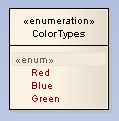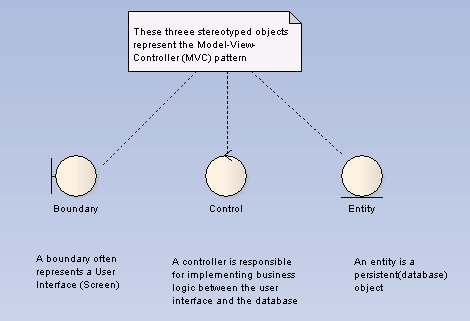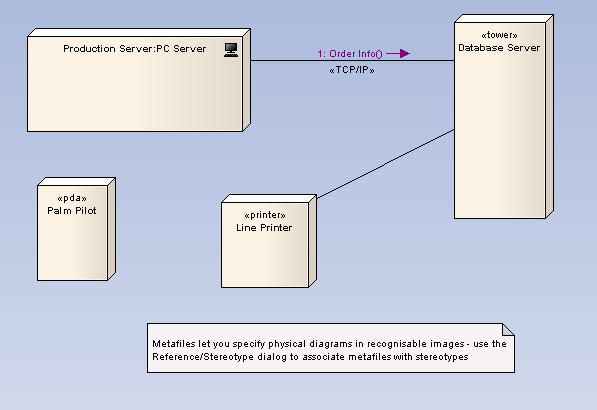UML supports a large number of stereotypes, which are an inbuilt mechanism for logically extending or altering the meaning, display and syntax of a model element. Different model elements have different stereotypes associated with them.
For further definition of stereotypes, see the OMG UML specification (UML Superstructure Specification, v2.1.1, section 18.3.2, page 665).
A stereotype is generally displayed as in the example below (where <<enumeration>> is the stereotype).

In some cases the stereotype causes the element to be drawn differently, as below:

A metafile can be associated with the applied stereotype, as in the example below:

New, or customized, stereotypes can be created. Stereotypes can also be associated with new shapes, using either metafiles (image files) and colors or Shape Scripts, to apply non-UML shapes to elements and connectors. For further information on customizing stereotypes and applying Shape Scripts, see the Enterprise Architect Software Developers' Kit (SDK).
See Also


